Malawi. Mount Mulanje: ‘The island in the sky’.
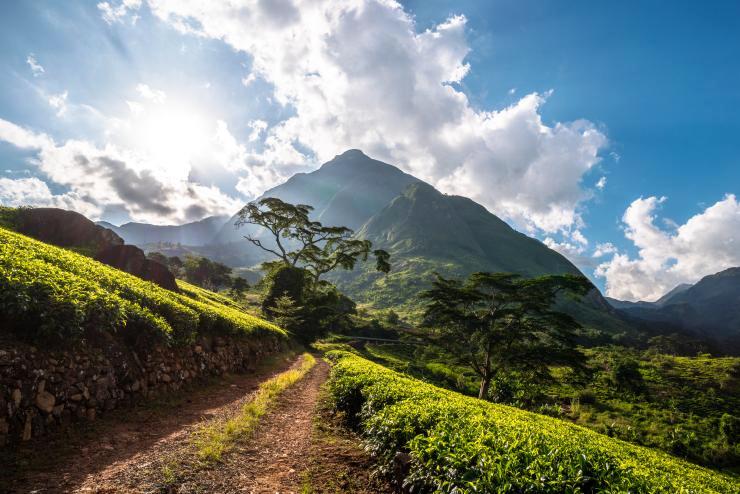
In southern Malawi, on the border with Mozambique, an imposing granite massif with sheer walls, Mount Mulanje, captures the humidity of the winds coming from the Indian Ocean, creating mists and rains that nourish lush forests and green tea plantations.
With an altitude of 3,002 meters, Mount Mulanje is the highest mountain in southern Africa. It is usually cloaked in clouds, from which often only the top, Sapitwa, emerges, which takes on the appearance of a floating island. It is no coincidence that the mountain is known as ‘the island in the sky’ by the locals. However, those clouds offer more than
just an illusion of the sea.
They also provide rain and water for the surrounding areas. This climate favours a unique ecosystem, with rare and endemic life forms that make the massif a global Biosphere Reserve – where for example ferns stand out, a unique case in the world, comparable to the Galapagos – with over 100 classified species and new ones yet to be recorded.
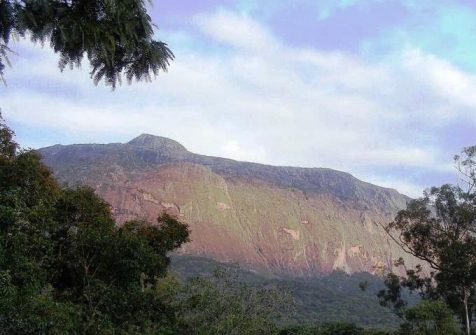
Western side of Mulanje Mountain in Sunset. CC-BY-SA-3.0/Felefuchs
The spring waters of the four main rivers, Ruo, Thuchila, Lichenya, and Likhubula, gush out carving a way through rocks and cutting through gorges seeking a way to escape to descend the massif until, always turbulent, they feed the Shire River, which drains all the rivers and the waters of the Rift Valley in Malawi, including the large lake, to then join the Zambezi, farther south, which takes them back to the Indian Ocean. Here the impatient Chiperoni waits for the sun to transform them into vapor and then blow them back into the face of the massif in a perpetual fight between giants.
Mount Mulanje is not like the famous Kilimanjaro or Mount Kenya, but herein lies a deception: a mountain has many complexities and altitude is just one of them; to remind us, Sapitwa peak literally means ‘the place where you should not go’. Step by step you overcome all the typical bands of Afro-montane vegetation in a succession of gorges, valleys, ravines, ridges, rivers, forests, and cliffs of rock slabs dominated by around twenty massive peaks.
It is possible to come across the precious and vulnerable Mulanje cedar, Widdringtonia whytei, Malawi’s endemic national tree, or discover the chameleon Chamaeleo mlanjensis, two species of gecko, Lygodactylus rex and Lygodactylus bonsi, and various frogs.
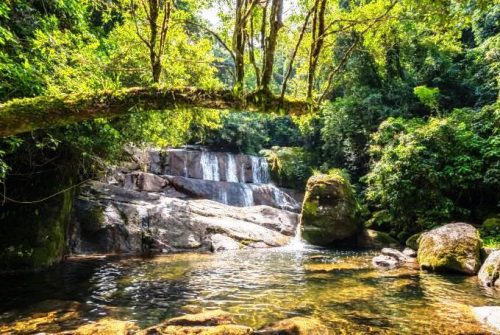
A natural pool at the foot of a waterfall along the Minunu River on Mount Mulanje. Shutterstock/Mhenrion
Among the mammals, there are 66 species including baboons, vervet monkeys, galagos and small antelopes, hyenas and even leopards, though these are difficult to spot; it is the only place in Malawi where the rodent Aethomys namaquensis is present. Servals and their tracks are clearly visible on the plateau.
There are 233 species of butterflies among which we find three that are endemic to Mulanje: Charaxes margaretae, Cymothoe melanjae and Baliochila nyasae. The massif is also home to around three hundred species of birds, some rare and vulnerable such as the white-winged ale (Apalis chariessa) or the Tyholo ale (Alethe choloensis) and the spotted thrush Zoothera guttata.
On the plateau there are eleven refuges, connected to each other by paths and scenic routes: a fill of oxygen and energy not to be missed, immersed in a mixture of bare cliffs always under the crucible of the nefarious myths of Sapitwa, the ‘capital of spirits’, or of Napolo, the mythical serpent that lives under the mountain, associated in local mythology with landslides, earthquakes and floods.
In Malawian literature, Napolo is a plentiful source for writers, who draw insights for society from it, use it more metaphorically than in a literal sense to enrich their works, and sometimes mask the meaning from the inquiring eyes of politicians.
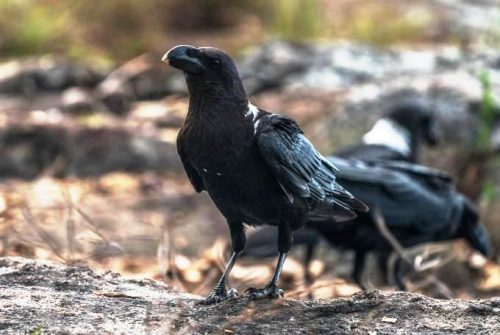
White-necked ravens on Mount Mulanje in Malawi.123rf
The Mulanje massif has a magic all of its own and, although in all likelihood the British writer and linguist J.R.R. Tolkien never travelled to these latitudes, the story, whether legend or fantasy, that Mount Mulanje was the inspiration for the Lord of the Rings, Mulanje in Middle-earth with the omnipresent molars of Sapitwa which become the Misty Mountains, where Bilbo defeats Gollum in a game of enigmas, corridors of ferns and cedars become the High Woods where his dwarf companions are captured by giant spiders and where in the distance Rivendell, refuge of the elves, reigns.
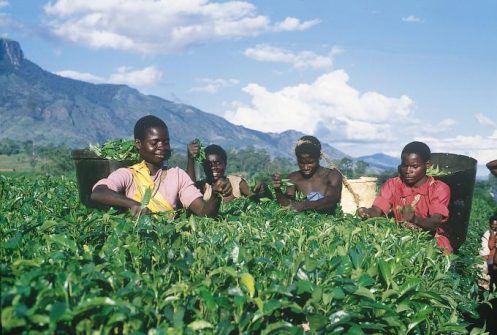
Tea plantations at the foot of Mount Mulanje. File swm
At the foot of the mountain, a single perennial colour reigns supreme: green in all its shades and variations. You can never escape it (why would one do so?). Even when the country is burning in the November heat and all around is dry, emerald green predominates in Mulanje.
Walking among the tea plantations, on the red earth paths where the Camellia sinensis has been cut, hand pruned and picked to produce the prized Malawi black tea, is a unique experience. Although one of the smallest countries in Africa – and overshadowed by neighbouring safari giants Tanzania, Zambia, and Mozambique – Malawi is a place of breathtaking landscapes and vast vistas. From the crystal-clear waters of Lake Malawi to the rolling highlands, this country, carved into the Great Rift Valley, well deserves its reputation as the ‘warm heart of Africa’, and this is how the Ministry of Tourism and tour companies promote it. The reason becomes evident by immersing yourself in the villages, along the lake shores, in the tea plantations and in meeting the people: gentle, serene, and friendly. (Open Photo:The start of the Ruo Path in the Lujeri Tea Estate leading up to the plateau of Mount Mulanje. Shutterstock/ Mhenrion)
Stefano Pesarelli/Africa



